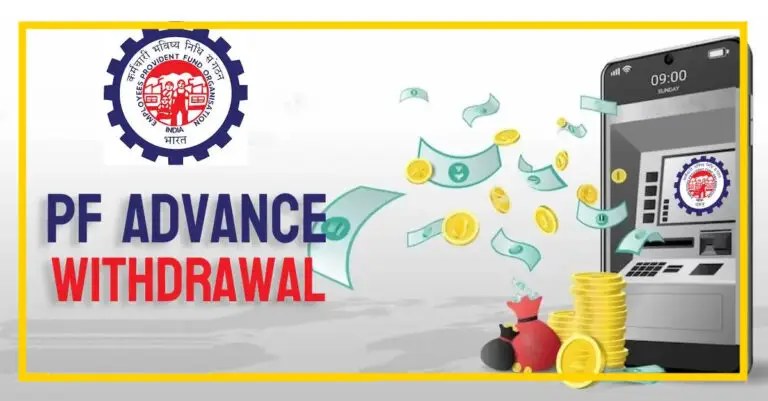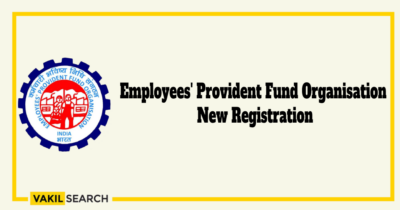Discover the process of opting out of India's EPF scheme. Navigate personal financial goals with our guide on opting out of the Employee Provident Fund.
The Employee Provident Fund (EPF) is a retirement benefits scheme for salaried employees in India. It is a mandatory savings scheme where both the employee and employer contribute a certain percentage of the employee’s salary towards the EPF account. However, some employees may prefer not to participate in the scheme due to various reasons such as personal financial goals or investment preferences. The good news is that the EPF scheme allows employees to opt-out of the scheme. In this blog, we will discuss the detailed procedure of Opt-Out Option in EPF.
Understanding the Opt-Out Option in EPF
The opt-out option in EPF allows an employee to withdraw from the EPF scheme and stop contributing to the scheme. However, it is important to note that this option is available only to employees who earn less than ₹ 15,000 per month. Employees who earn more than ₹ 15,000 per month cannot opt-out of the scheme and are required to contribute to the EPF scheme as per the rules.
Steps to Opt-Out Option in EPF
The procedure for opting-out of EPF is relatively simple and can be completed online. Here are the steps to follow:
-
Step 1: Visit the EPF Member Portal
To opt-out of the EPF scheme, the first step is to visit the EPF member portal at https://unifiedportal-mem.epfindia.gov.in/memberinterface/. If you do not have an account on the portal, you will need to create one by providing your UAN (Universal Account Number) and other personal details.
-
Step 2: Login to the Portal
Once you have created an account on the portal, you can log in using your UAN and password.
-
Step 3: Go to the ‘Online Services’ Section
After logging in, you need to go to the ‘Online Services’ section and select the ‘Claim (Form-31, 19 & 10C)’ option.
-
Step 4: Select the Reason for Withdrawal
Next, you need to select the reason for withdrawal as ‘Illness’, ‘Marriage’, ‘Higher Education’, ‘Purchase of land or house’, ‘Repair or modification of the house’, or ‘Any other reason’.
-
Step 5: Enter the Amount to be Withdrawn
You will then need to enter the amount to be withdrawn. The amount that can be withdrawn depends on the reason selected for withdrawal. For example, if the reason for withdrawal is illness, you can withdraw up to six months’ basic wages and DA or the total employee share with interest, whichever is lower.
-
Step 6: Upload the Necessary Documents
You will then need to upload the necessary documents, such as medical certificates, wedding invitations, or land purchase documents, depending on the reason selected for withdrawal.
-
Step 7: Submit the Claim
After completing the above steps, you can submit the claim for withdrawal. The claim will be verified by the EPFO and the amount will be credited to your bank account.
Important Points to Note
- Only employees earning less than ₹ 15,000 per month can opt-out of the EPF scheme.
- Once you opt-out of the EPF scheme, you will not be eligible for the employer’s contribution to the EPF account.
- The opt-out option is available only after completing two months of continuous service with the employer.
- If you have withdrawn from the EPF scheme earlier, you will not be eligible for the opt-out option.
- The amount withdrawn from the EPF account before the completion of five years of continuous service is taxable.
How to Opt-Out of EPF?
Now that we have discussed the eligibility and consequences of opting out of EPF, let us look at the procedure to opt-out of EPF.
-
Step 1: Write a Request Letter
The first step is to write a request letter to the employer stating your intention to opt-out of EPF. The letter should mention the reason for opting out and should be addressed to the HR department or the person in charge of EPF in the organisation.
-
Step 2: Submit the Request Letter
The request letter should be submitted to the HR department or the person in charge of EPF in the organisation. Along with the request letter, you may need to submit a few documents such as ID proof, address proof, and bank account details.
-
Step 3: Wait for Confirmation
After submitting the request letter, you need to wait for the confirmation from the EPF office. The confirmation will be sent to the employer, who will then inform the employee.
-
Step 4: Update the KYC Details
Once the confirmation is received, the employee needs to update the KYC details on the EPFO portal. The KYC details include the bank account number, IFSC code, Aadhaar number, PAN number, and mobile number.
-
Step 5: Open a New NPS Account
As mentioned earlier, opting out of EPF means that the employee will not have any retirement benefits from the organisation. To ensure financial security after retirement, the employee can open a new National Pension Scheme (NPS) account.
FAQs – Opt-Out Option in EPF
What happens when I opt out of PF?
Opting out means forgoing Provident Fund benefits. You won't contribute or receive employer contributions; it may impact retirement savings.
How can I opt for a minimum PF contribution?
Discuss with your employer to contribute the minimum eligible percentage, usually 12% of your basic salary, to the Provident Fund.
How do I opt out of the EPS scheme?
Consult your employer or EPFO for details on opting out of the Employee Pension Scheme (EPS) if eligible.
Is it good to opt for PF?
Opting for PF is advisable; it builds a corpus for retirement and provides financial security.
Is it compulsory to opt for PF?
It's usually mandatory for eligible employees, but some may be exempt based on income or industry norms.
Can I opt out of PF in my new job?
Generally, no. PF is often mandatory, and opting out may not be an option in many organisations.
Is it possible for employees earning more than ₹15,000 to voluntarily contribute to the Provident Fund?
The PF wage limit is ₹15,000 for mandatory coverage, but employees with a higher salary can still contribute voluntarily.
Conclusion
Opt-Out Option in EPF is a personal choice that should be taken after careful consideration of the consequences. While opting out of EPF means higher take-home pay in the short term, it also means foregoing retirement benefits provided by the organisation. If an employee decides to opt-out of EPF, they should ensure that they have an alternative retirement plan in place, such as opening a new NPS account or investing in other retirement schemes.
If you are an employer, it is important to inform your employees about the Opt-Out Option in EPF and ensure that they understand the consequences of opting out. You should also ensure that the PF return filing is done accurately and on time to avoid penalties and legal action.
Certainly, Opt-Out Option in EPF is a crucial decision that can have significant financial implications. It is always recommended to consult a financial advisor or tax expert before taking such a step. Additionally, Vakilsearch can assist you with the necessary paperwork and ensure that you follow the correct procedure to Opt-Out Option in EPF and safeguard your financial interests.
Also, Read:










